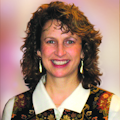SAN FRANCISCO, CA--The American Society for Cell Biology annual meeting--or “Cell Bio” as participants call it--turned up numerous companies using lasers, optics, and related technologies. Held December 13–17 in San Francisco, it certainly wasn’t as large a show as Neuroscience, but proportionally it featured just as many companies of interest to bio-optics watchers.
Exhibitors included companies producing flow cytometers and cell sorters (including Accuri Cytometers, Amnis, BD Biosciences, Fluxion Biosciences, Stratedigm), molecular imaging systems (Caliper Life Sciences, Carestream Molecular, GE Healthcare), hyperspectral imaging and microscope systems (Agilent, Asylum Research, Carl Zeiss MicroImaging, Leica, Chromodynamics, Nikon, PerkinElmer, Veeco) and other analysis systems (BaySpec, Hitachi, JPK, MDS Analytical Technologies).
The exhibit hall also featured makers of agents, dyes, and assays (AnaSpec, Invitrogen, Millipore, Thermo), stages and other microscopy tools (Applied Scientific Instrumentation, PI, Piezosystem Jena, Photonic Instruments, Prior Scientific, Sutter Instrument), cameras (Andor, Apogee Instruments), and plenty of light sources and optics (Corning, Chroma Technology, CoolLED, CVI Melles Griot, Elliot Scientific, EXFO, ESI/New Wave Research, Hamamatsu, Semrock).
More power to more people
A major theme of the event was enabling broader access to powerful instrumentation. For instance Stratedigm (San Jose, CA) showed off its benchtop modular flow cytometer that gives even entry-level buyers access to top quality (see www.bioopticsworld.com/articles/334514). And exhibitor Millipore (Danvers, MA) and its partner Guava Technologies (Hayward, CA), which announced in March that they would team up to create new, integrated offerings, held a press conference that concentrated on that theme. The partners used the event to launch a new award worth more than $100,000 to support innovative research using new flow cytometry and antibody detection workflows they are developing. But they spent a good deal of time describing a benchtop system that allows even novice technicians to achieve the same high-quality and -reliability results as trained cytometry specialists after just an hour with the product. Its software is programmed to correlate with optimized, validated assay kits (and by the way, the system’s microcapillary architecture translates to 10X less bio-waste). “We’re decentralizing the market for basic questions that just a few years ago were considered complex questions,” said Geoff Crouse, VP, Life Science Business Unit at Millipore. The system targets projects involving thousands of cells instead of millions of cells. “Some people say, ‘I don’t use flow cytometry because I don’t have millions of cells to process,’” Crouse said, describing a target market.
Accuri Cytometers (Ann Arbor, MI) recently launched a similar awards program, the Accuri Cytometers Creativity Awards, and at the show announced the winner: Heather Newkirk, Ph.D. of Clinical Reference Laboratory and the University of Missouri-Kansas City (see www.bioopticsworld.com/articles/347745). Newkirk won an Accuri C6 flow cytometer--another benchtop unit--that the company says it designed from the ground up with input from hundreds of researchers. “It is encouraging to see that flow cytometry has been translated into a user-friendly, lower-cost system with the invention of the C6,” said Newkirk. According to Accuri, the C6 also costs less than one-third that of the current market leader.
Noteworthy discoveries
An unexpected gem I discovered is CellChip, another solution targeting low-volume applications (3K-20K cells), from Intellego (Irvine, CA), a company not quite fully formed at the time of the show. I waited in line behind keynote speaker Roger Tsien (honored with the 2008 Nobel Prize in chemistry for his discovery and development of the green fluorescent protein (GFP) in collaboration with two other scientists) to see Intellego’s clever cell sorting system. The platform aims to solve two problems: it helps scientists separate cells (either individually or by class), and it keeps cells alive and healthy so they can expand. Enabling the study of individual cells (including those of “difficult” cell lines), it uses standard microscopy methods, and a pulsed laser system--provided by ESI/New Wave Research--to sort cells of interest from the cultured population. It also enables an increase in sort criteria, allowing sortation based on morphology and fluorescence signature, for example.
Another welcome surprise was my discovery of the German firm Nanoscribe. A spinout of three entities--the Karlsruhe Institute of Technology, the federation of the Universität Karlsruhe, and the Forschungszentrum Karsruhe GmbH--the company is 40% owned by Carl Zeiss. Founded by researchers in photonic crystals and metamaterials, the company makes “true 3-D laser lithography systems” that allow creation of three-dimensional micro- and nano-structures in various commercially available photoresists. CEO Martin Hermatschweiler described applications including development of structures for specific cell growth studies, tissue engineering, and stem cell differentiation. But the systems also target applications in photonics, micro-optics, and microfluidics.
About the Author

Barbara Gefvert
Editor-in-Chief, BioOptics World (2008-2020)
Barbara G. Gefvert has been a science and technology editor and writer since 1987, and served as editor in chief on multiple publications, including Sensors magazine for nearly a decade.